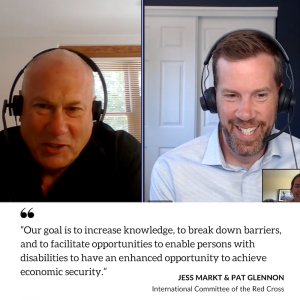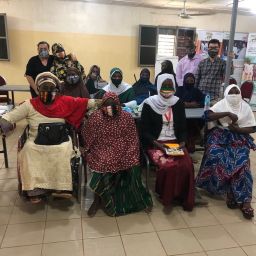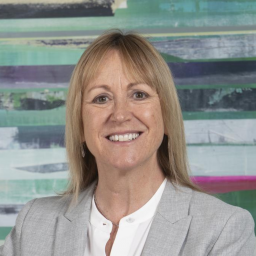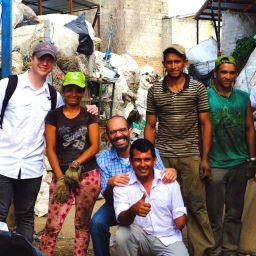Meaningful Business (MB:) What are the biggest challenges right now in accurate measurement and reporting of impact?
Courtney Holm (CH:) To be honest, this is hard work.
It would be easier if we had a universally agreed understanding of what accounts for social impact work and KPIs against the goals to measure activities. The lack of agreement on scope, which are clearer for environmental goals, makes it difficult to design programmes that can be audited against and that deliver sustained value, leaving a legacy in the community after funding has dried up.
Overall, global value chains are complex, and it is complicated to track negative and positive programme level outcomes. We see a lack of sufficient tools and technologies being deployed that could standardise social impact measurement, which would make data collection and analysis simpler.
It’s also fundamental that organisations grasp the interlinkages between climate change and social issues and provide a clear approach to implement holistic programmes and track outcomes accordingly. We see vicious cycles when impacts aren’t quantified and proven to create value, with the result being less incentives for companies to invest in the future, or worse – more incentive for them to greenwash.
The private sector should focus on understanding their internal perception of performance against their commitments and validate those perceptions with stakeholder opinions and their reputation.
MB: With many frameworks out there, which would you recommend that offer a more accurate assessment of impact?
CH: You are right, it’s a saturated market with many frameworks and tools available. The best tools are the ones that will get used and that are aligned to your existing architecture, because continuity of data hierarchy, structures, naming conventions and models will go a long way towards integrated reporting and using the data to drive decision making.
Tools like Salesforce Sustainability Cloud Solution – currently focused on carbon accounting across an organisation’s value chain and soon to be expanded to include social value metrics. Also SAP’s Solutions for Sustainability – a suite of up and coming tools ranging from climate action, circular economy, responsible value chains and holistic reporting are designed to be extensions of existing solutions. Other tools, like DocuSign’s Agreement Cloud can automate compliance via smart contracts and can link to other enterprise solutions.
From a framework perspective, some are more relevant to certain industries than others, but two that cut across sectors to provide guidance and best practice are the HEC Society & Organizations (S&O) Center’s social impact measurement report which standardises financial and impact assessment of corporate social responsibility initiatives. The WBCSD’s Social & Human Capital Protocol clarifies best practices, boosts the positive impacts of business, and improves business credibility by integrating the consideration of social impacts and dependencies into performance management and decision-making. It includes a methodology focused on four stages (object, scope, measurement and evaluation and application of results) applicable across sectors.
MB: How can organisations be better incentivised to measure social and environmental impact?
CH: Governments are doing their part to encourage accountability through legislation for reporting impacts. Others are also issuing financial incentives like tax credits offered to US investors in renewable energy projects (i.e. Bank of America has slashed its 2020 corporate tax rate to 5.8% from 21% thanks to ESG projects).
I often say that business broadly care about two things; what their customers want and what their competitors are doing, so bold leadership from organisations that are willing to take risks and invest in impact management will reap the rewards of being able to talk openly about their work (because they have an audit trail) and position themselves as progressively driving industry change. This should encourage others to follow suit.
Consumers are hugely influential, it’s important that we all speak with our wallets and reward organisations that are working hard to align to our values.
Indices are important too, because they recognise leaders and shame laggards which will be nudged to perform better than competitors. The challenge with having too many indices is that it’s hard to tell how well you and your competitors actually stack up. We are building a tool to help address this challenge.
MB: How close are we to a universally standardised yardstick to measure social and environmental impact?
CH: We are close.
There has been good recent progress, especially on the environmental side where we are seeing sectors align and mobilise various stakeholder around common terms and definitions.
The EU taxonomy for sustainable activities and the WEF’s whitepaper on common metrics and consistent reporting are great examples.
The key is getting organisations to be comfortable with collaboration and to use something that was not created for them by them, but rather for the greater good. Remember that many groups have been putting thought leadership out in the open for years, the WBCSD for examples, published their framework in 2008 and worked with 20 companies to craft the work.
___
to join A GLOBAL community of purpose-driven Leaders, apply to become a member of meaningful business here




















